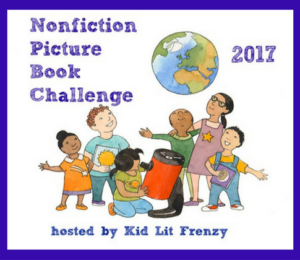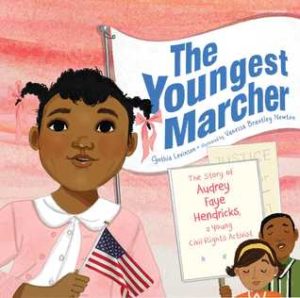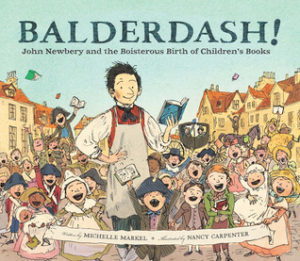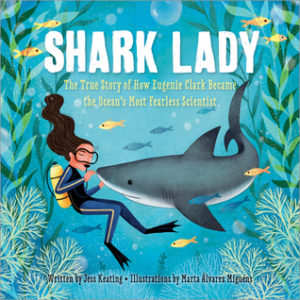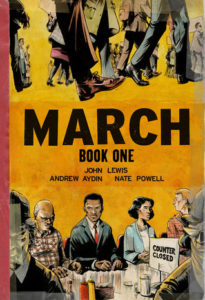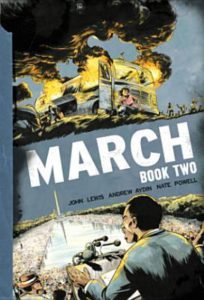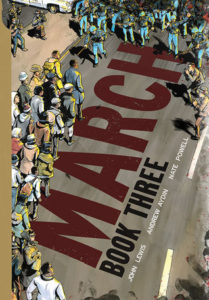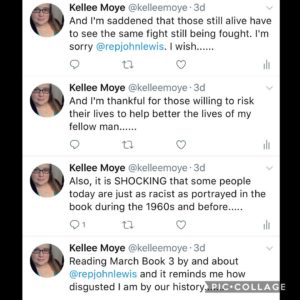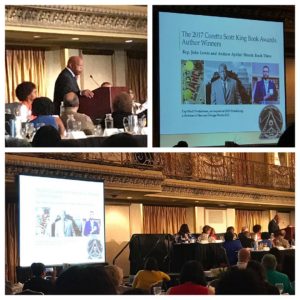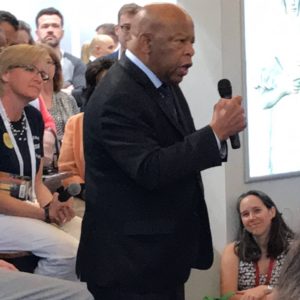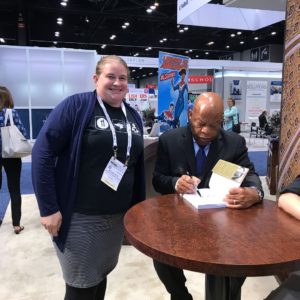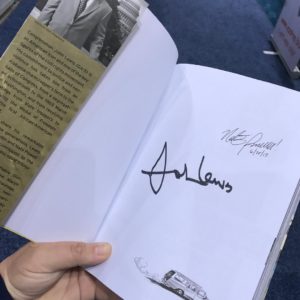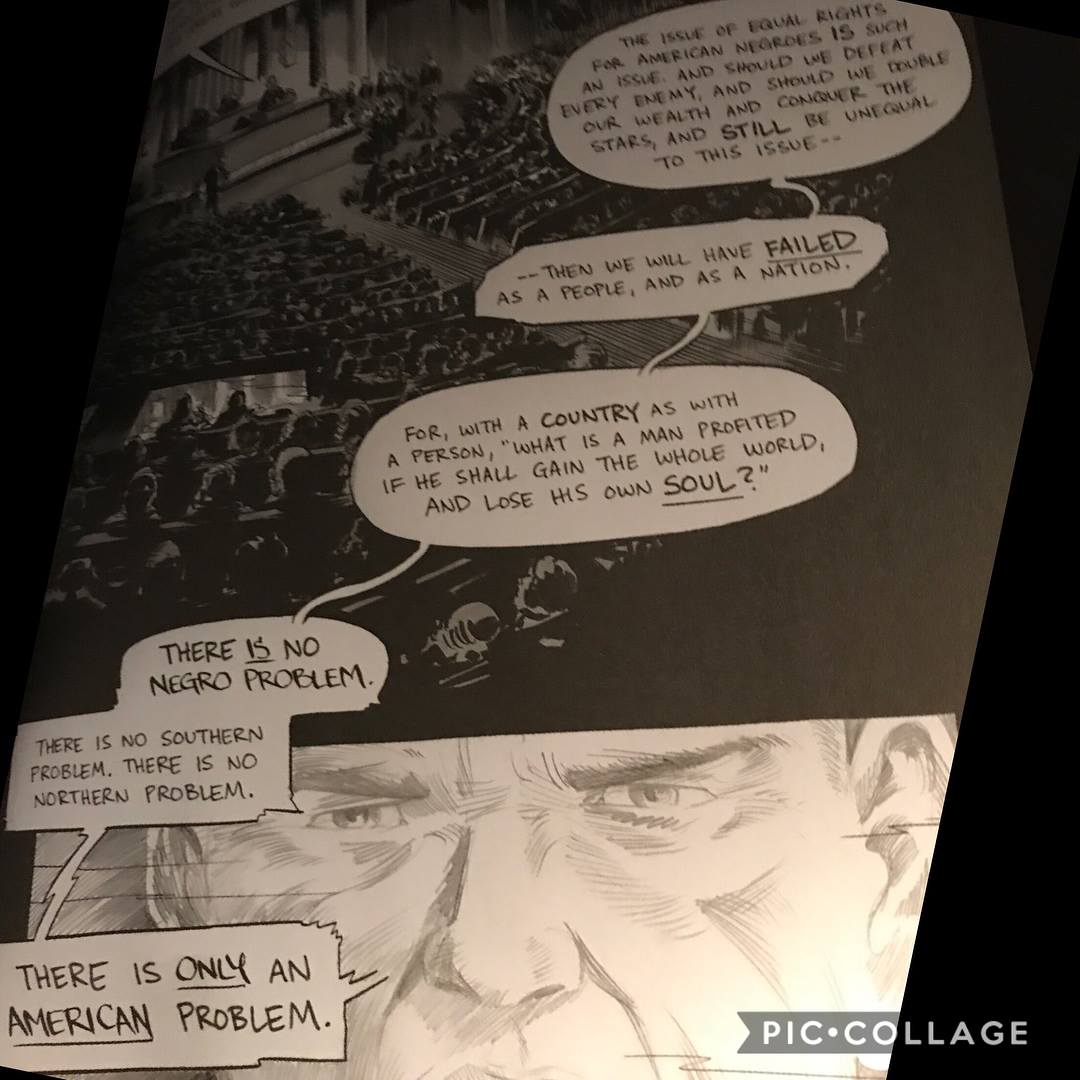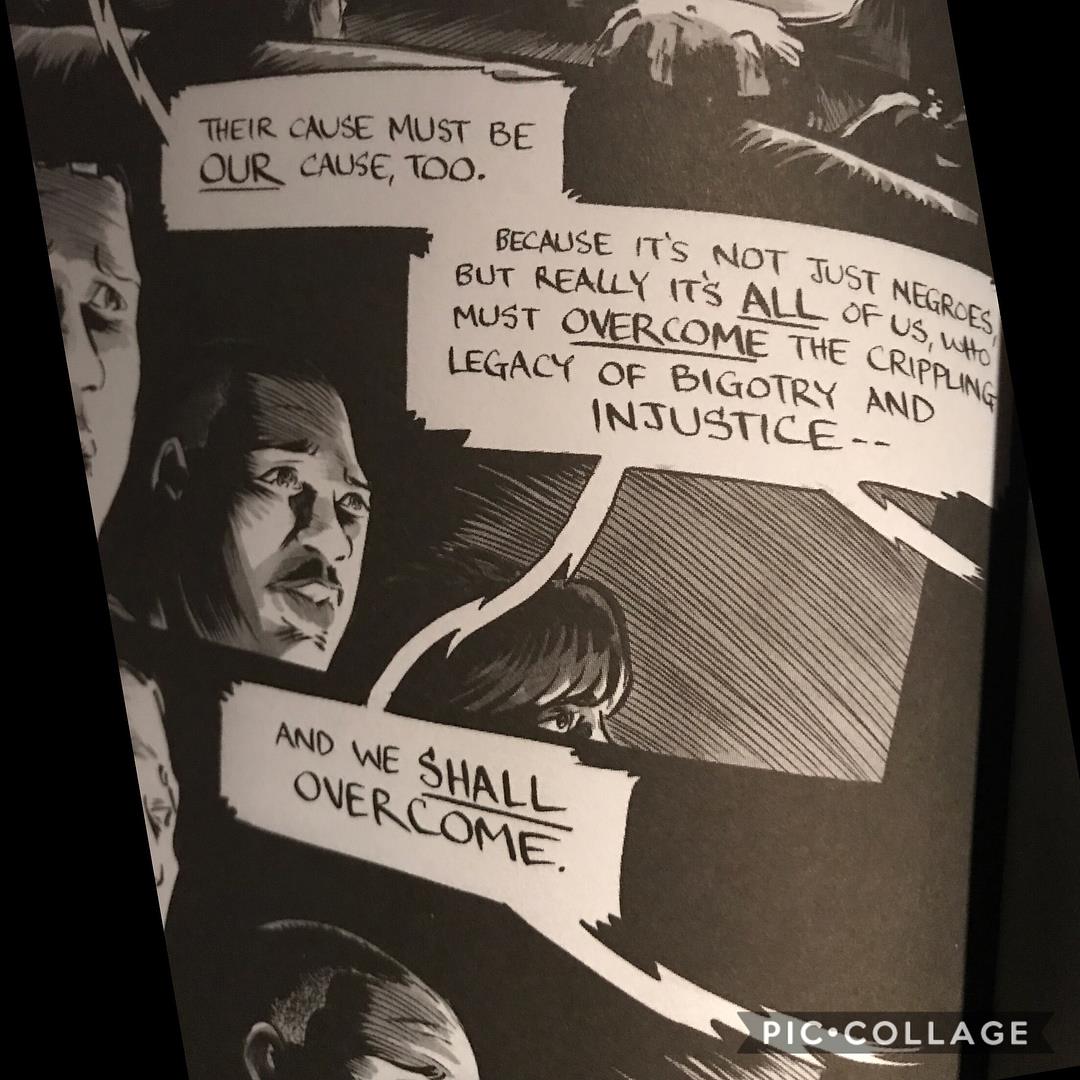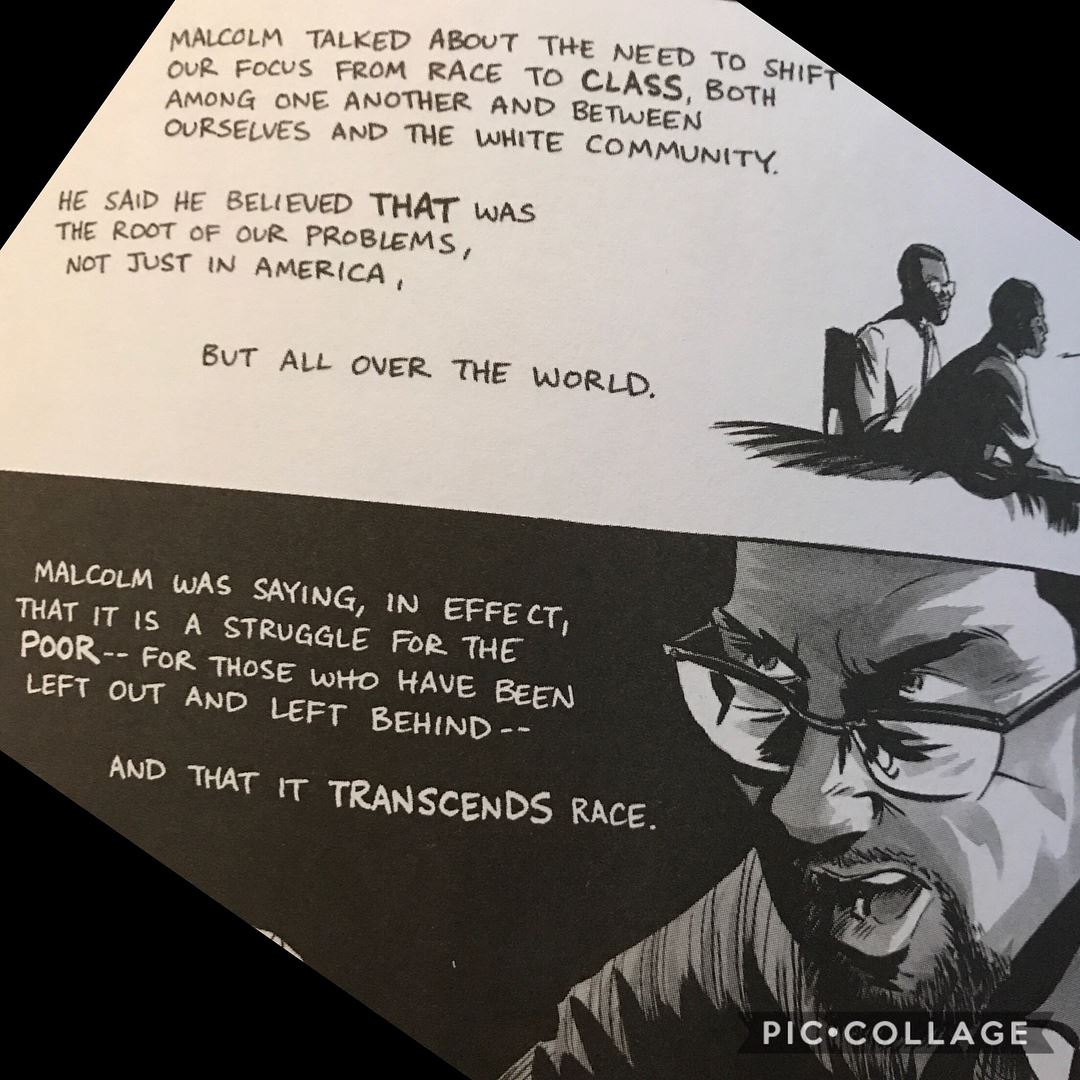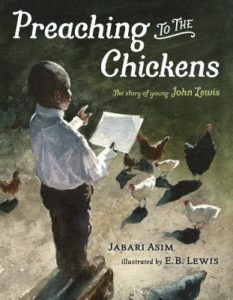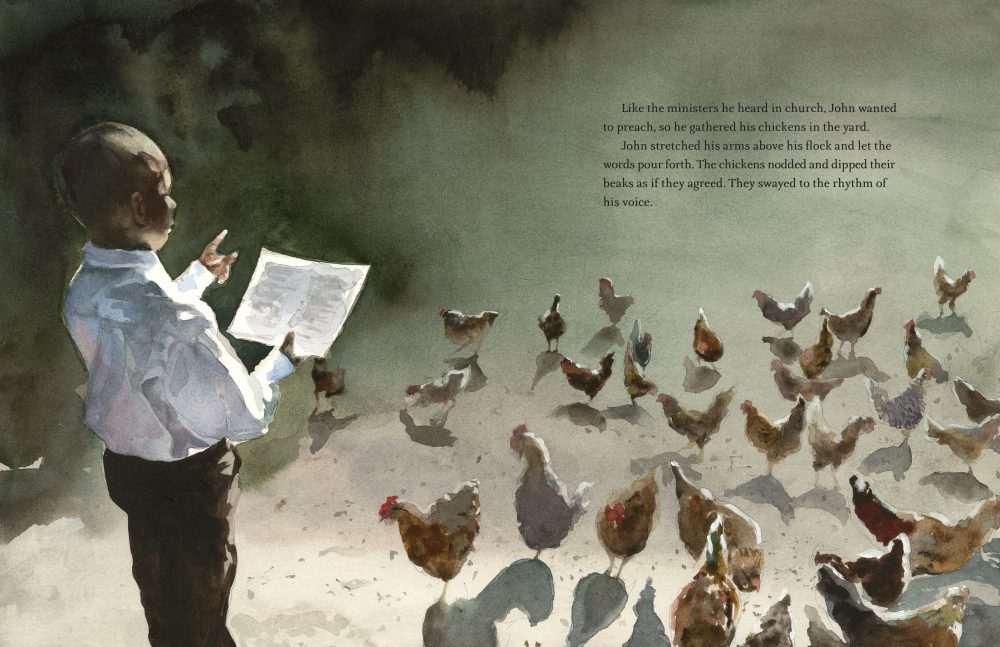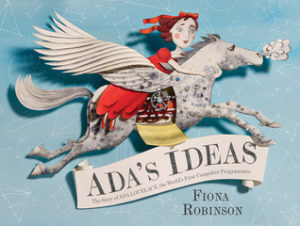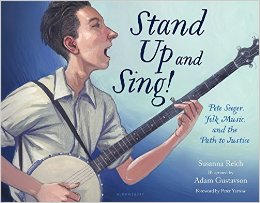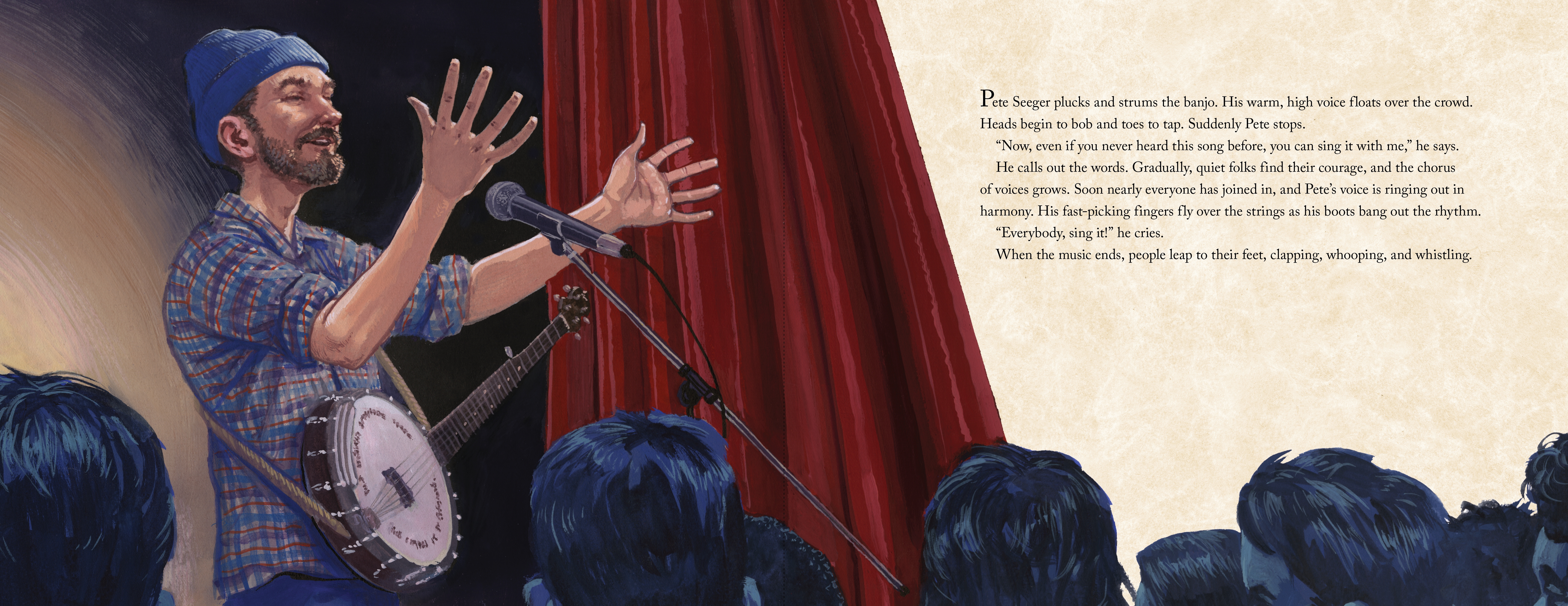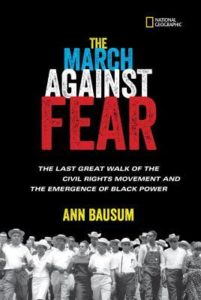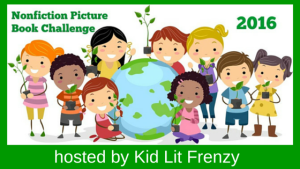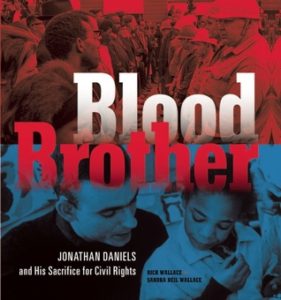Nonfiction Wednesday
Nonfiction Picture Book Wednesday is hosted by Kid Lit Frenzy and was started to help promote the reading of nonfiction texts. Most Wednesdays, we will be participating and will review a nonfiction text (though it may not always be a picture book).
Be sure to visit Kid Lit Frenzy and see what other nonfiction books are shared this week!
A couple of weeks ago at ALA, my friend Michele Knott of Mrs. Knott’s Book Nook, was kind enough to show me some of her favorite nonfiction picture book biographies published in 2017, and I am so happy to share them with you all.
The Youngest Marcher: The Story of Audrey Faye Hendricks, a Young Civil Rights Activist
Author and Illustrator: Cynthia Levinson
Published January 17th, 2017 by Atheneum Books for Young Readers
Summary: Meet the youngest known child to be arrested for a civil rights protest in Birmingham, Alabama, 1963, in this moving picture book that proves you’re never too little to make a difference.
Nine-year-old Audrey Faye Hendricks intended to go places and do things like anybody else.
So when she heard grown-ups talk about wiping out Birmingham’s segregation laws, she spoke up. As she listened to the preacher’s words, smooth as glass, she sat up tall. And when she heard the plan—picket those white stores! March to protest those unfair laws! Fill the jails!—she stepped right up and said, I’ll do it! She was going to j-a-a-il!
Audrey Faye Hendricks was confident and bold and brave as can be, and hers is the remarkable and inspiring story of one child’s role in the Civil Rights Movement.
My Thoughts: This book was a perfect picture book companion while I was reading the March trilogy by John Lewis, and reading it and the trilogy made me realize I need to update my Civil Rights text set with all of the amazing titles I’ve read recently, including this one. Audrey Faye Hendricks’s story is a story of a young girl that was so gutsy and stood up for what she believed in– equality because she wanted to be able to do whatever she put her mind to when she grew up. This story also gave another angle to the Civil Rights Movement showing the inclusiveness of all aspects of the Black community in the fight for equal rights.
Balderdash!: John Newbery and the Boisterous Birth of Children’s Books
Author and Illustrator: Michelle Markel
Published April 4th, 2017 by Chronicle Books
Summary: A picture book biography about John Newbery pioneering author and publisher for whom the prestigious Newbery medal is named and the revolution in children s books that he led This rollicking and fascinating picture book biography chronicles the life of the first pioneer of children s books John Newbery himself While most children s books in the 18th century contained lessons and rules John Newbery imagined them overflowing with entertaining stories science and games. He believed that every book should be made for the reader’s enjoyment Newbery for whom the prestigious Newbery Medal is named became a celebrated author and publisher changing the world of children’s books forever This book about his life and legacy is as full of energy and delight as any young reader could wish.
My Thoughts: This was the perfect book for me to read after attending ALA and the Newbery-Caldecott-Wilder banquet because, although I knew Newbery was a children’s book publisher, I didn’t know much at all about him or his life. Markel’s biography of him is a perfect introduction! Newbery knew that children needed books that were made specifically for them, a philosophy that we all know is correct and true! I loved how Newbery fought the norms of society and put his money where his mouth is and opened a children’s bookstore which led to the world of children’s books we have today! No wonder the Newbery was named after him!
Shark Lady: The True Story of How Eugenie Clark Became the Ocean’s Most Fearless Scientist
Author: Jess Keating
Illustrator: Marta Álvarez Miguéns
Published June 6th, 2017 by Sourcebooks Jabberwocky
Summary: At 9 years old, Eugenie Clark developed an unexpected passion for sharks after a visit to the Battery Park Aquarium in New York City. At the time, sharks were seen as mindless killing machines, but Eugenie knew better and set out to prove it. Despite many obstacles in her path, Eugenie was able to study the creatures she loved so much. From her many discoveries to the shark-related myths she dispelled, Eugenie’s wide scientific contributions led to the well-earned nickname “Shark Lady.”
My Thoughts: I had not heard of Eugenia Clark until I read Heather Lang’s Swimming with Sharks and now with Shark Lady we have a second amazing biography about her! I am so glad that she is getting the attention that her amazing story and career deserves! I love that her story shows that inquiry from a young age can lead to a successful and fulfilling career. It also teaches us that nature is something we need to keep questioning and learning from because assumptions are how beautiful things in nature get misunderstood.
All Books Recommended For:
